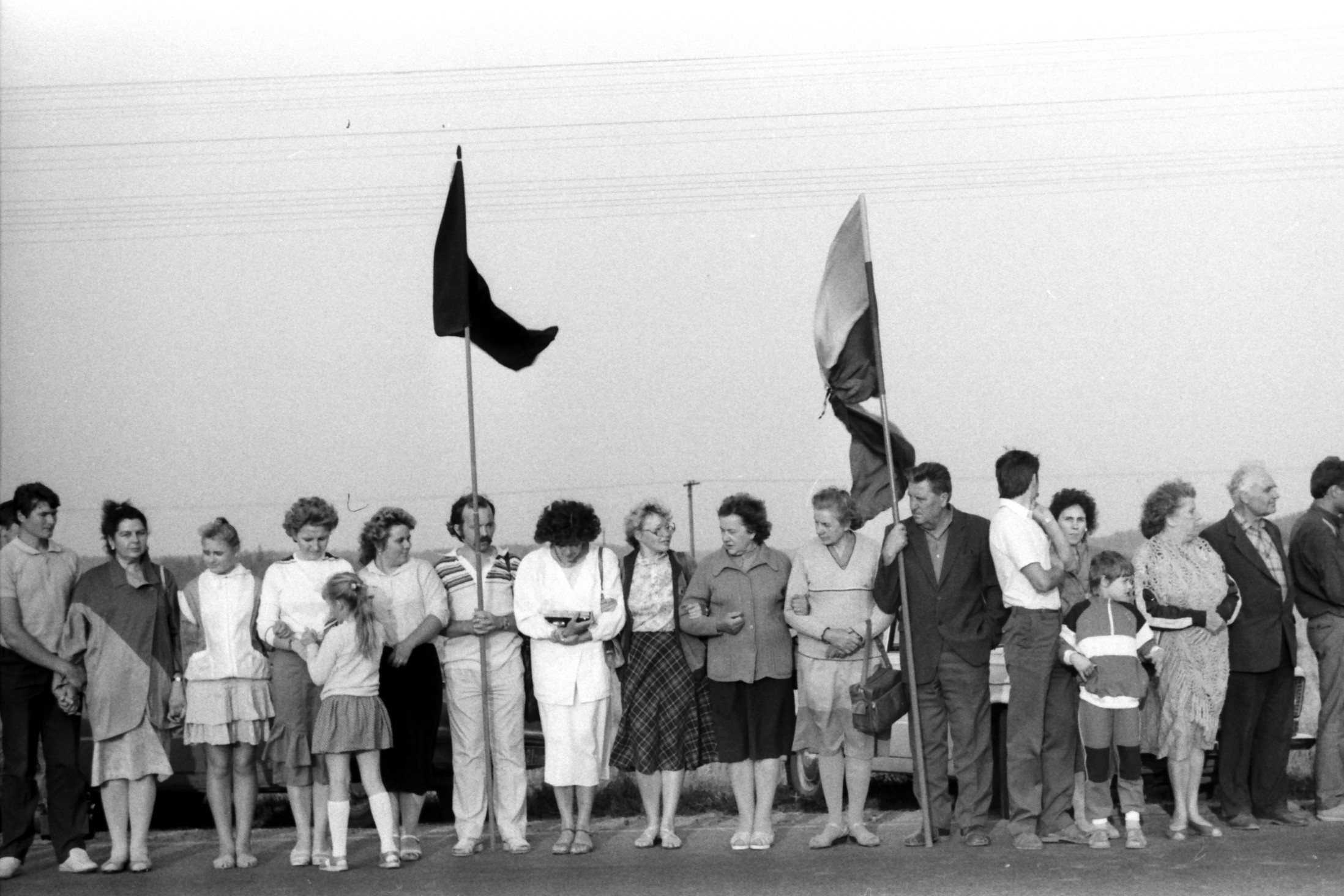Baltic Way, 1989
Enlarge text Shrink text- Work cat.: 2001468257: Batūra, R. Baltijos kelias, 1999.
- Internet, April 4, 2002(Estonia, Latvia and Lithuania participated in the "Baltic Way" a human chain, held on 23 August 1989 from Vilnius to Tallinn to protest the 50th anniv. of the signing of the Molotov-Ribbentrop pact; Via Baltica, Balti tee, Baltijas cel̦š)
The Baltic Way (Lithuanian: Baltijos kelias; Latvian: Baltijas ceļš; Estonian: Balti kett) or Baltic Chain (also "Chain of Freedom") was a peaceful political demonstration that occurred on 23 August 1989. Approximately two million people joined their hands to form a human chain spanning 690 kilometres (430 mi) across the three Baltic states of Estonia, Latvia and Lithuania, which at the time were occupied and annexed by the USSR and had a combined population of approximately eight million. The central government in Moscow considered the three Baltic countries constituent republics of the Soviet Union. The demonstration originated in "Black Ribbon Day" protests held in the western cities in the 1980s. It marked the 50th anniversary of the Molotov–Ribbentrop Pact, in which Poland, Finland, Estonia, Latvia, Lithuania, and Romania were (as "spheres of influence") divided between the Soviet Union and Nazi Germany. The Soviet-Nazi pact led to the outbreak of World War II in September 1939 and the Soviet invasion and occupation of the Baltic countries in June 1940. The 1989 event was organised by the Baltic pro-independence movements: Rahvarinne of Estonia, the Tautas fronte of Latvia, and Sąjūdis of Lithuania, to draw global attention by demonstrating a popular desire for independence and showcasing solidarity among the three nations. It has been described as an effective publicity campaign, and an emotionally captivating and visually stunning scene. The event presented an opportunity for the Baltic activists to publicise the Soviet rule and position the question of Baltic independence not only as a political matter, but also as a moral issue. The Soviet authorities responded to the event with intense rhetoric, but failed to take any constructive actions that could bridge the widening gap between the Baltic republics and the rest of the Soviet Union. Seven months after the protest Lithuania became the first Soviet republic to declare independence. After the Revolutions of 1989, 23 August has become an official remembrance day both in the Baltic countries, in the European Union and in other countries, known as the Black Ribbon Day or as the European Day of Remembrance for Victims of Stalinism and Nazism.
Read more on Wikipedia >
 Topic
Topic












